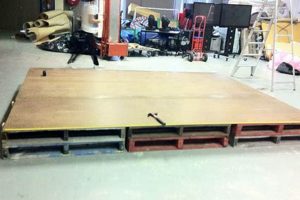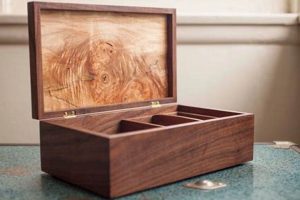A structure, typically crafted from lumber and assembled by the end-user, designed to attach to the head of a bed frame serves as both an aesthetic element and a functional component within the bedroom. It can be a personalized project, utilizing various types of wood, finishes, and design elements to complement the overall decor of the sleeping space. An example is a reclaimed wood panel, sanded and sealed, mounted to the wall behind the bed or directly to the frame.
The creation of such a structure offers numerous advantages. It allows for personalization and customization, enabling individuals to tailor the piece to their specific tastes and needs. Constructing it themselves can provide significant cost savings compared to purchasing a pre-made product. Historically, headboards have served as both a decorative feature and a functional barrier, offering protection from drafts and providing a surface to lean against while sitting up in bed.
Subsequent sections will delve into specific design ideas, material selection considerations, step-by-step construction guides, and finishing techniques to assist in the successful completion of this project. Further discussion will cover mounting options, safety precautions, and resources for sourcing necessary materials and tools.
Construction Guidelines
This section provides essential guidance to ensure a successful build. Careful consideration of these points will improve both the structural integrity and aesthetic appeal of the finished product.
Tip 1: Material Selection: Choose wood based on desired aesthetics, durability, and budget. Softwoods like pine are more affordable but less durable than hardwoods like oak or maple. Ensure the lumber is properly dried and free from significant defects such as knots or warping.
Tip 2: Precise Measurements: Accurately measure the width of the bed frame to ensure the finished piece fits properly. Account for any desired overhang or extensions. Use a precise measuring tool and double-check all dimensions before cutting any materials.
Tip 3: Secure Joinery: Employ robust joinery techniques such as screws, dowels, or mortise and tenon joints to create a stable and long-lasting structure. Pre-drilling pilot holes before driving screws can prevent splitting the wood.
Tip 4: Sanding and Preparation: Thoroughly sand all surfaces to create a smooth and uniform finish. Start with a coarse grit sandpaper and gradually move to finer grits. Remove all dust before applying any finish.
Tip 5: Finishing Techniques: Apply a protective finish to enhance the wood’s natural beauty and protect it from moisture and wear. Consider using stain, paint, varnish, or sealant, following the manufacturer’s instructions carefully.
Tip 6: Mounting Considerations: Plan the mounting method in advance. Determine whether it will be wall-mounted or attached directly to the bed frame. Use appropriate hardware and ensure secure attachment to prevent instability.
Tip 7: Safety Precautions: Always wear safety glasses and a dust mask when cutting, sanding, or finishing wood. Work in a well-ventilated area and follow all safety guidelines for power tools.
By adhering to these guidelines, the construction process can be streamlined, resulting in a sturdy, attractive, and personalized piece. These tips promote not only a better end product but also safer working practices.
The subsequent stages of the process will address specific design considerations and troubleshooting common construction challenges.
1. Wood Selection
Wood selection is a foundational determinant in the quality, aesthetics, and longevity of any wooden DIY headboard project. The type of wood selected directly impacts the structural integrity, resistance to wear and tear, and the overall visual appeal of the finished piece. The choice is not merely aesthetic; it dictates the practical performance and lifespan of the headboard. For instance, using a softwood like pine, while cost-effective and easy to work with, results in a headboard more susceptible to dents and scratches than one constructed from a hardwood such as oak or maple. The cause-and-effect relationship is evident: improper wood choice can lead to premature degradation and require more frequent repairs or replacement, negating the initial cost savings.
Beyond durability, wood selection significantly influences the finishing process. Different wood species possess varying grain patterns and densities, affecting how they absorb stains, paints, and other finishes. A close-grained wood like cherry, for example, will exhibit a smoother and more uniform finish compared to a more porous wood like ash. This understanding is practically significant as it dictates the type of finishing products required and the number of coats needed to achieve the desired result. Furthermore, the sustainability aspect should be considered; selecting responsibly sourced lumber or reclaimed wood contributes to environmentally conscious practices. Reclaimed wood, in particular, offers a unique aesthetic character and reduces demand for newly harvested trees, aligning with sustainable building principles. For example, a headboard crafted from reclaimed barn wood not only provides a rustic, visually appealing design but also repurposes materials that would otherwise be discarded.
In summary, wood selection is an indispensable component in the successful creation of a wooden DIY headboard. It governs the structure’s durability, aesthetic characteristics, and the type of finishing required. While cost may be a factor, prioritizing wood quality and considering sustainability are crucial for ensuring a lasting and environmentally responsible project. Overlooking these considerations may result in a final product that fails to meet expectations in terms of both appearance and performance.
2. Design Planning
Design planning serves as the blueprint for any successful wooden DIY headboard endeavor. It transcends mere aesthetic preference and encompasses structural integrity, material optimization, and efficient execution. A well-defined plan mitigates potential errors, minimizes material waste, and ensures a cohesive and functional final product. Neglecting this phase often leads to inconsistencies, structural weaknesses, and dissatisfaction with the outcome.
- Dimensional Accuracy
Dimensional accuracy dictates the overall fit and proportion of the headboard relative to the bed frame and bedroom space. Precise measurements are paramount, considering factors such as bed frame width, desired headboard height, and wall space limitations. Failure to accurately account for these dimensions results in a headboard that is either disproportionate, unstable, or incompatible with its intended environment. For example, a headboard designed with insufficient width relative to the bed frame creates an unbalanced appearance and potential instability.
- Structural Considerations
Structural considerations address the headboard’s load-bearing capacity and overall stability. The design must account for the weight of the materials used, the method of attachment to the bed frame or wall, and any additional features such as shelving or integrated lighting. Improper structural design leads to a headboard that is prone to wobbling, sagging, or even collapsing under its own weight. An example is a headboard utilizing insufficient support for a heavy slab of wood, resulting in eventual structural failure.
- Material Optimization
Material optimization involves selecting the appropriate wood type and minimizing material waste during the construction process. Design planning allows for efficient use of lumber, reducing costs and environmental impact. For instance, incorporating standardized lumber dimensions into the design minimizes the need for excessive cutting and trimming. Conversely, a poorly planned design may necessitate purchasing more lumber than required, leading to financial waste and unnecessary resource consumption.
- Aesthetic Integration
Aesthetic integration ensures the headboard’s design complements the existing bedroom decor. This involves considering factors such as wood finish, style (e.g., modern, rustic, minimalist), and any decorative elements. A well-integrated design enhances the room’s overall ambiance and creates a cohesive visual experience. For example, a headboard crafted from reclaimed wood and finished with a weathered stain complements a rustic-themed bedroom, while a sleek, geometric design with a high-gloss finish aligns with a modern aesthetic. Conversely, a poorly integrated design clashes with the existing decor and detracts from the room’s overall appeal.
These facets of design planning collectively contribute to the creation of a functional, aesthetically pleasing, and durable wooden DIY headboard. A comprehensive approach to design planning minimizes potential errors, optimizes resource utilization, and ensures a successful project that meets the intended purpose and enhances the overall bedroom environment. Further attention to detail during the design phase pays dividends in the long run, resulting in a final product that reflects careful planning and skilled execution.
3. Accurate Measurements
The precision of measurements is critically important to the success of a wooden DIY headboard project. Discrepancies, even minor ones, can accumulate and lead to significant problems in the final product, affecting both its functionality and aesthetic appeal.
- Bed Frame Compatibility
The primary function of accurate measurements is to ensure seamless integration with the existing bed frame. The headboard’s width must precisely match the bed frame’s width to allow for secure and stable attachment. Incorrect measurements result in a headboard that is either too wide, preventing proper fitting, or too narrow, creating unsightly gaps and compromising structural integrity. For example, if the bed frame measures 60 inches, the headboard should also measure 60 inches, allowing for minimal tolerance. Deviations from this measurement necessitate modifications or, in severe cases, a complete rebuild.
- Symmetrical Design
Achieving a balanced and visually pleasing design relies heavily on accurate measurements. In symmetrical headboard designs, precise measurements ensure that elements on either side of a central axis are identical in size and placement. Errors in measurement lead to asymmetry, which detracts from the headboard’s aesthetic appeal. For example, if a headboard features two decorative panels, each panel must be precisely the same size and equidistant from the center to maintain visual balance. Even a small discrepancy can be readily noticeable and spoil the overall design.
- Material Utilization
Accurate measurements are fundamental to efficient material utilization. Calculating the precise dimensions of each component before cutting lumber minimizes waste and reduces material costs. Incorrect measurements often result in wasted wood, as components must be recut or discarded. For example, if the headboard design requires a 48-inch long support beam, accurate measurement ensures that the beam is cut to the correct length, avoiding the need to purchase additional lumber. Precise planning based on accurate measurements is a key factor in cost-effective construction.
- Structural Integrity
The structural integrity of a wooden DIY headboard is directly tied to the accuracy of the measurements. Properly measured components fit together snugly, creating a robust and stable structure. Conversely, inaccurate measurements can lead to weak joints and compromised stability. For instance, if the mortise and tenon joints are not precisely sized, the joint may be loose and unable to withstand stress. This can lead to wobbling, creaking, or even structural failure over time. Adherence to precise measurements is essential for a headboard that is both aesthetically pleasing and structurally sound.
In conclusion, accurate measurements are not merely a detail but a cornerstone of wooden DIY headboard construction. They are essential for bed frame compatibility, symmetrical design, efficient material utilization, and structural integrity. A commitment to precision in measurement is a commitment to quality in the final product, ensuring a headboard that is both functional and visually appealing.
4. Secure Joinery
Secure joinery is paramount in the construction of a wooden DIY headboard, representing the linchpin of structural integrity and longevity. The quality of the joinery directly correlates with the headboard’s ability to withstand stress, resist warping, and maintain its aesthetic appeal over time. Improper or weak joinery undermines the entire project, regardless of the quality of materials or design.
- Load Distribution
Effective joinery facilitates the distribution of weight and stress across the entire structure of the wooden DIY headboard. Joints such as mortise and tenon, dovetail, or robust screw connections transfer forces from one component to another, preventing localized stress concentrations that could lead to failure. For example, a headboard with integrated shelving must utilize strong joinery to support the weight of objects placed on the shelves, distributing the load evenly across the frame. Insufficient joinery results in sagging, cracking, or complete separation of the components.
- Dimensional Stability
Secure joints contribute significantly to the dimensional stability of the structure. Wood is subject to expansion and contraction with changes in humidity, and weak joinery allows for movement that can cause warping, cracking, or loosening of the connections. Well-executed joints, such as those employing wood glue in conjunction with mechanical fasteners, resist these forces and maintain the overall shape and dimensions of the headboard. For example, a headboard constructed with frame-and-panel joinery utilizes the joinery to allow for panel movement without affecting the overall frame structure.
- Joint Selection Appropriateness
The choice of joint is critical and needs to be appropriate for the application. While butt joints held together with only screws may be simple to execute, they offer minimal resistance to racking forces and are unsuitable for structural components. Joinery options like mortise and tenon or dovetail joints, while more complex to execute, provide superior strength and resistance to separation. For example, attaching the headboard legs to the main frame typically requires a strong joint such as a mortise and tenon to withstand the forces from leaning or accidental impacts.
- Aesthetic Integration & Longevity
Beyond the structural aspects, secure joinery enhances the aesthetic appeal and extends the lifespan of the wooden DIY headboard. Tight, well-fitted joints create a clean, professional look and prevent unsightly gaps or misalignments. Additionally, robust joinery resists wear and tear, ensuring that the headboard remains stable and attractive for years to come. For example, a headboard featuring exposed dovetail joints showcases the craftsmanship and provides a visual indicator of the joint’s strength. Properly executed joinery contributes significantly to the overall value and satisfaction derived from the project.
In summary, secure joinery is not merely a construction detail but a fundamental element in the creation of a durable, stable, and aesthetically pleasing wooden DIY headboard. Careful selection and execution of appropriate joinery techniques are essential for ensuring the project’s long-term success and providing a functional and visually appealing addition to the bedroom.
5. Smooth Finish
The application of a smooth finish to a wooden DIY headboard transcends mere aesthetics; it serves as a critical component in both the long-term preservation and the tactile experience of the piece. A well-executed finish enhances the wood’s natural characteristics, protects it from environmental factors, and contributes significantly to the overall user satisfaction.
- Aesthetic Enhancement
A smooth finish accentuates the inherent beauty of the wood grain and color. It eliminates visual distractions caused by imperfections, such as splinters or rough patches, allowing the wood’s natural character to take center stage. For instance, a cherry wood headboard with a glossy finish showcases the wood’s rich red tones and intricate grain patterns, creating a visually appealing focal point in the bedroom. In contrast, an uneven finish detracts from the wood’s beauty and creates a perception of poor craftsmanship.
- Tactile Comfort
A smooth surface provides a pleasant tactile experience, making the headboard comfortable to touch and lean against. The absence of roughness or sharp edges eliminates the risk of discomfort or injury. For example, a headboard with a carefully sanded and polished finish offers a smooth and inviting surface, ideal for sitting up in bed to read or relax. A rough finish, on the other hand, feels unpleasant to the touch and may even cause splinters or scratches.
- Protective Barrier
The finish forms a protective barrier against moisture, stains, and scratches, extending the lifespan of the wooden DIY headboard. It prevents water from penetrating the wood, which can lead to warping, rot, or mold growth. Similarly, it shields the wood from stains caused by spills or contact with other materials. For instance, a headboard with a durable sealant is resistant to water rings from glasses and scratches from accidental bumps. Without this protection, the wood is vulnerable to damage and deterioration.
- Maintenance Facilitation
A smooth finish simplifies cleaning and maintenance, making it easier to remove dust, dirt, and grime. The smooth surface prevents dirt from becoming embedded in the wood pores, allowing for easy wipe-down with a damp cloth. For example, a headboard with a polyurethane finish can be easily cleaned with a mild detergent and water, maintaining its appearance for years to come. A rough or unfinished surface, however, is more difficult to clean and requires more intensive maintenance.
In summary, the application of a smooth finish to a wooden DIY headboard is not merely a cosmetic step but a functional necessity. It enhances the wood’s beauty, provides tactile comfort, offers protection from damage, and simplifies maintenance, collectively contributing to the headboard’s overall value and longevity. Each of these facets contributes to a finished product that is both visually appealing and functionally durable.
6. Mounting Method
The selected method of mounting significantly impacts the stability, safety, and aesthetic integration of a wooden DIY headboard within a bedroom setting. The choice of mounting strategy is a critical decision, directly influencing the headboard’s functionality and its perceived value. For instance, a poorly executed mounting can result in an unstable headboard that wobbles or detaches from the bed frame, posing a safety hazard and detracting from the overall appearance. Conversely, a well-considered and properly implemented mounting method ensures a secure, visually appealing, and long-lasting addition to the bedroom. Consider a wall-mounted design; improper anchoring can lead to detachment and potential damage to the wall, or, conversely, a stable attachment enhances the headboard’s visual appeal by creating a floating effect.
Various mounting methods exist, each offering distinct advantages and disadvantages. Options include direct attachment to the bed frame using bolts or screws, wall-mounting using brackets and anchors, or employing a freestanding design relying on the headboard’s weight and stability. The selection of the appropriate method depends on factors such as the headboard’s size and weight, the construction materials, the type of bed frame, and the wall structure. Attaching a heavy headboard directly to a lightweight metal bed frame can overwhelm the frame’s structural capacity, leading to damage or instability. Conversely, a lightweight headboard can be securely attached to the frame with minimal modification. Wall-mounting requires careful assessment of the wall’s construction to ensure that the anchors are appropriate for the wall material and capable of supporting the headboard’s weight.
Ultimately, the mounting method is an inextricable component of the overall design and construction of a wooden DIY headboard. The mountings success depends upon thorough planning, careful execution, and an understanding of the interplay between the headboard’s design, the bed frame, and the surrounding environment. Ignoring these factors can undermine the entire project, leading to an unsatisfactory and potentially hazardous outcome. Thoughtful consideration of the mounting requirements at the design stage ensures a seamless integration, a safe installation, and a visually appealing addition to the bedroom.
7. Safety Practices
Adherence to rigorous safety practices is paramount throughout the construction and installation of a wooden DIY headboard. Failure to observe proper safety protocols can result in physical injury, equipment damage, or a structurally unsound final product. Therefore, prioritizing safety is not merely a recommendation, but a critical necessity.
- Personal Protective Equipment (PPE)
The consistent use of appropriate PPE, including safety glasses, dust masks, and hearing protection, minimizes exposure to hazards inherent in woodworking. Safety glasses protect against projectile debris generated during sawing, sanding, and drilling. Dust masks prevent inhalation of fine wood particles, reducing the risk of respiratory irritation and long-term health problems. Hearing protection mitigates noise-induced hearing loss from power tools. The absence of PPE significantly elevates the risk of preventable injuries.
- Safe Tool Operation
Proficient and responsible operation of power tools is essential for preventing accidents. This encompasses thorough understanding of tool manuals, adherence to recommended operating procedures, and maintaining tools in good working order. Proper use of push sticks and clamps ensures safe manipulation of workpieces, minimizing the risk of hand injuries. Regular inspection of power cords and blades identifies potential hazards before they escalate into dangerous situations. Tools should never be operated when tired or under the influence of impairing substances.
- Workspace Management
Maintaining a clean, well-lit, and organized workspace minimizes the likelihood of trips, falls, and other accidents. Adequate lighting improves visibility, reducing the risk of errors and miscalculations. A clear workspace facilitates efficient material handling and prevents clutter from becoming a hazard. Securing electrical cords and dust collection hoses reduces tripping hazards. A dedicated and organized workspace promotes a safer and more productive work environment.
- Material Handling Procedures
Safe material handling techniques are crucial for preventing back injuries and other musculoskeletal problems. Lifting heavy boards or components requires proper lifting techniques, including bending at the knees and keeping the back straight. Assistance from another person or the use of mechanical lifting devices should be employed when handling particularly heavy materials. Securing lumber and components during cutting and assembly prevents them from shifting or falling, minimizing the risk of injury. Proper storage of materials prevents clutter and ensures easy access when needed.
Integrating these safety practices into every phase of wooden DIY headboard construction mitigates risks and promotes a secure working environment. The commitment to safety not only safeguards the individual but also contributes to the creation of a high-quality and structurally sound finished product. Furthermore, prioritizing safety sets a positive example and encourages responsible behavior in future woodworking endeavors.
Frequently Asked Questions
This section addresses common inquiries regarding the construction and implementation of a wooden DIY headboard, providing concise and factual responses to ensure clarity and understanding.
Question 1: What is the typical cost associated with constructing a wooden DIY headboard?
The cost varies depending on factors such as the type of wood used, the complexity of the design, and the price of hardware. A simple headboard made from reclaimed wood may cost significantly less than one crafted from premium hardwood. Accurate budgeting requires a detailed material list and comparison shopping.
Question 2: What tools are essential for building a wooden DIY headboard?
Essential tools include a saw (circular saw, jigsaw, or handsaw), a drill, a sander, a measuring tape, a level, and various hand tools such as screwdrivers and clamps. More complex designs may necessitate specialized tools like a router or a joiner.
Question 3: What wood types are recommended for headboard construction?
Both hardwoods and softwoods are suitable for headboard construction, each offering distinct advantages. Hardwoods like oak and maple provide greater durability, while softwoods like pine and cedar are more affordable and easier to work with. The choice depends on budget and desired aesthetics.
Question 4: How does one properly attach a wooden DIY headboard to a bed frame?
Attachment methods vary depending on the bed frame and headboard design. Common techniques include bolting the headboard directly to the bed frame using pre-drilled holes, using metal brackets to secure the headboard to the frame, or wall-mounting the headboard behind the bed.
Question 5: What are some common design considerations for a wooden DIY headboard?
Design considerations include the desired height and width of the headboard, the style (e.g., modern, rustic, minimalist), the incorporation of decorative elements, and the compatibility with the existing bedroom decor. Planning the design in advance is crucial for a successful outcome.
Question 6: What safety precautions should be taken during headboard construction?
Essential safety precautions include wearing safety glasses to protect the eyes, using a dust mask to prevent inhalation of wood particles, employing hearing protection when operating power tools, and ensuring a well-ventilated workspace. Proper use of tools and safe material handling techniques are also essential.
A clear understanding of these key aspects can aid in effectively planning and implementing a successful headboard project.
The subsequent section will address troubleshooting strategies for common construction challenges.
In Conclusion
The foregoing exploration has illuminated critical facets of constructing a “wooden diy headboard”. From meticulous wood selection and precise design planning to the imperative of secure joinery and the application of a smooth, protective finish, each stage demands careful consideration. The process extends to the method of mounting, requiring attention to stability and safety, as well as adherence to stringent safety practices throughout the construction phase. The success of such an endeavor hinges on a commitment to quality and a thorough understanding of woodworking principles.
The creation of a “wooden diy headboard” offers a unique opportunity to personalize a living space and cultivate craftsmanship. While the project presents challenges, the potential rewardsa custom-designed, durable, and aesthetically pleasing addition to the homeare significant. The principles outlined herein serve as a foundation for informed decision-making and successful execution. Further exploration of advanced techniques and innovative designs may further enhance the possibilities within this craft.


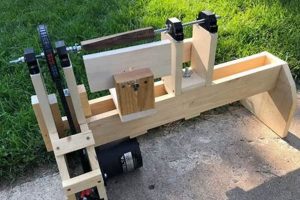
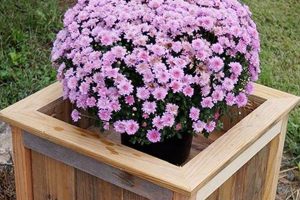
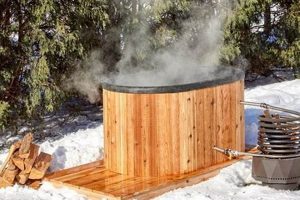
![[DIY Guide] Easy DIY Wood Window Shutters You Can Build! The DIY Hub: Creative Crafts, Repairs & Life Hacks [DIY Guide] Easy DIY Wood Window Shutters You Can Build! | The DIY Hub: Creative Crafts, Repairs & Life Hacks](https://craftingdiycenter.com/wp-content/uploads/2025/07/th-3579-300x200.jpg)
